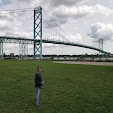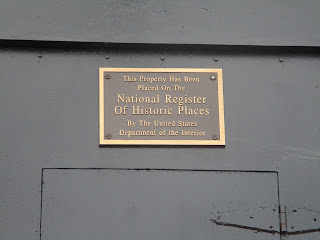The lower Delaware River
in the Philadelphia area is not a place where you would expect to find historic
lighthouses, but that’s exactly what you’ll find in the nearby village of
Paulsboro, NJ. Located directly across the Delaware from Philadelphia International
Airport, the Tinicum Island Rear Range Light is a significant lighthouse built
in 1880 to mark a section of the navigable waterway along the Paulsboro
riverfront south of Philadelphia.
So what exactly is a “rear
range” light? Lights such as this one work in tandem with a second light, known
as a “front range” light and when the two are aligned back-to-back in a certain
orientation along the river, they combine to form a pathway for ships to follow
in order to avoid navigable hazards. In this case, the tandem light setup was
developed to help craft navigate around Little Tinicum Island in the middle of
the river nearby. The rear range light here in Paulsboro is the more famous of
the two and it is this light that is featured in this post.
Still active today, the
lighthouse’s operations were automated in 1933. The light has a nautical range
of 18 miles and has been listed on the National Register of Historic Places
since 2005. Seasonal tours of the lighthouse are offered by the Tinicum Rear
Range Lighthouse Society every third weekend of the months of April thru
October. Included in the tour is a climb up the 112-step stairway to the lantern
room at the top of the tower as well as inside information about its history
and construction. Definitely worth a stop if you’re in the area or “just passing
through”.









Comments